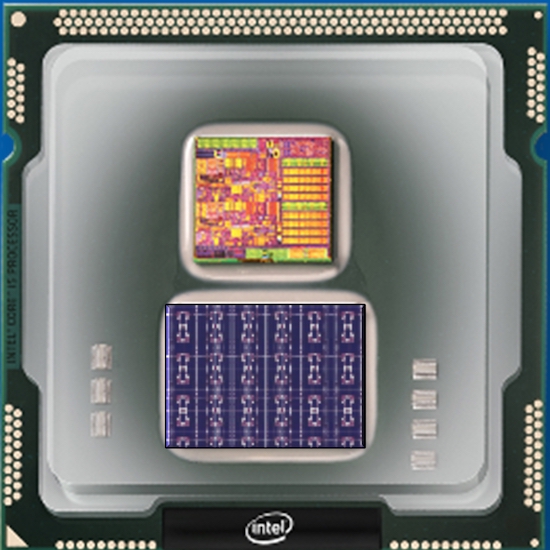
Imagine a future where complex decisions can be made faster and adapted over time. Where social and industrial problems can be automatically solved using previous experience. This is the future, where witnesses, using image recognition applications, can analyze images from outdoor cameras and quickly transfer data to search for a missing or abducted person. This is the future where traffic lights automatically synchronize their work with traffic, reducing congestion and optimizing start and stop times. This is the future where robots are more autonomous, and work efficiency is much higher.
These statements belong to Dr. Michael Maybury (corporate vice president and managing director of Intel Labs at Intel Corporation), who shared with the public details of the new creation of Intel Labs - the neuromorphic Loihi chip.
The growing demand for data collection, analysis and decision-making in the field of highly dynamic and unstructured natural data leads to an increase in demand for computers that are ahead of the classic CPU and GPU architectures. In order to keep up with the pace of evolution of technology and in order to take the computation out of the PC or server, Intel has been working for the last 6 years on specialized architectures that can speed up classic computer platforms. Intel also increased its investment in AI (artificial intelligence) and neuromorph computing.
 Dr. Michael Maybury (Corporate Vice President and Managing Director of Intel Labs at Intel Corporation)
Dr. Michael Maybury (Corporate Vice President and Managing Director of Intel Labs at Intel Corporation)Our work in neuromorphic computing is built on decades of research and partnership, starting with CalTech professor Carver Mead, who was known for his fundamental work in semiconductor design. The combination of experience in microchips, physics and biology created the conditions for new ideas. The ideas were simple, but revolutionary: compare machines with the human brain. The high level of cooperation of different structures and people in this field of research contributes to the further development of science.
Intel, represented by its Intel Labs division, developed the first of its kind self-learning neuromorphic chip - Loihi - which simulates the functioning of the brain in the process of learning work based on the influence of the environment. This incredibly energy efficient chip, which uses data for training and drawing conclusions, becomes smarter with time and does not need to be trained in the traditional way. It uses a new approach to computing through asynchronous picking.
We believe that AI is in its infancy, and more methods and architectures, such as Loihi, will accompany its development. Neuromorphic computation draws inspiration from our current understanding of brain architecture and related computations. Brain neural networks transmit information using pulses or peaks, modulating synaptic connections based on the timing of these peaks, and store these changes locally on interconnects. Intellectual behavior is formed due to the cooperative and competitive interaction between the environment and several regions in the neural networks of the brain.
Machine learning models, such as deep learning, have achieved significant success by using extensive training kits to recognize objects and events. However, these machine learning systems are not so good unless they have training kits for recognizing a particular event, event, or element.
The potential benefits of a self-learning chip are almost limitless. For example, reading the pulse of a person in different conditions (after running, during meals, before bedtime) and transferring this data to the neuromorphic system to determine the "normal" heartbeat. Further, the system can constantly monitor the received pulse data and determine those cases when the pulse is not “normal”. The system can be personalized for each user.
This type of logic can also be applied in other areas, such as cybersecurity, where anomalies or differences in data streams can identify hacking, because the system knows which indicators are “normal” (correct).
Learn more about the Loihi test chip.The Loihi research test chip has digital circuits that mimic the basic mechanics of the brain, making machine learning faster and more efficient, while requiring less computational power. The neuromorphic model draws inspiration from how neurons interact and learn using peaks and synoptic plasticity, which can be modeled on a timing basis. It can help computers organize themselves and make decisions based on patterns and associations.
The Loihi test chip represents the high learning flexibility within the chip itself. This allows the machines to be autonomous and adapt in real time, instead of waiting for the next update from the cloud. Researchers demonstrated learning at a speed of 1 million times faster than typical peak neural networks (when measuring common operations) during the process of obtaining the most accurate result possible in solving the number recognition problem MNIST (volumetric database of handwritten number samples). Compared to other technologies, such as convolutional neural networks and deep learning neural networks, the Loihi test chip used far fewer resources to solve the same problems.
The self-learning opportunities uncovered by this test chip have enormous potential for improving automated and industrial applications, as well as personal robotics — any application that will benefit from automated operations and continuous learning in an unstructured environment. For example, the recognition of the movement of the car or bike.
In addition, this method is 1000 times more energy efficient than standard computer learning methods.
In the first half of 2018, the Loihi test chip will be distributed to leading universities and research institutes (working in the field of AI development).
additional informationLoihi features include:
- A fully asynchronous neuromorphic multi-core mesh that supports a wide range of sparse, hierarchical, and repetitive neural network topologies with every neuron capable of communicating with thousands of other neurons.
- Each neuromorphic core includes a learning mechanism that can be programmed to adapt network parameters during operation, supporting controlled, uncontrolled, reinforcing, and other learning paradigms.
- Manufacturing on the basis of Intel 14 nm technology.
- A total of 130,000 neurons and 130 million synapses.
- Development and testing of several algorithms with high algorithmic efficiency for tasks, including route planning, constraint satisfaction, sparse coding, vocabulary learning and learning and adaptation of dynamic models.
What's next?It is expected that due to the development in the field of computational and algorithmic innovations, the transformative power of AI will greatly affect society. Today, we at Intel are doing our utmost to justify Moore’s law and hold leadership in production in order to introduce a wide range of products to the market - Intel Xeon processors, Intel Nervana technology, Intel Movidius technology and Intel FPGA, which satisfy the unique requirements of AI processes.
Hardware and software, both general and personal, now come into play in full. For example, the Intel Xeon Phi processor is widely used in the world for scientific computing; it has created some of the largest models for interpreting large-scale scientific problems. The Movidius Neural Compute Stick is a striking example of 1 watt deployment of previously trained models.
AI workloads are evolving, becoming more and more complex and diverse. They will test the limits of the capabilities of today's dominant computational architectures and accelerate new non-standard approaches. Looking to the future, Intel believes that neuromorph computing makes it possible to provide exascale performance, inspired by how the brain works.
I hope you will follow the exciting events that will occur at Intel Labs in the next few months, when we will spread such a concept as neuromophical computing to support the global economy for the next 50 years. In the future with neuromorphic computations, everything you can imagine and even more will go from the possible to the real, as the flow of intelligence and decision-making is becoming more and more rapid.
Intel’s vision of developing innovative computing architectures remains unshakable, and we know what the future of computing looks like, because today we are creating it.
Source:
newsroom.intel.comAs advertising. Stock! Only now get
up to 4 months of free use of VPS (KVM) with dedicated drives in the Netherlands and the USA (configurations from VPS (KVM) - E5-2650v4 (6 Cores) / 10GB DDR4 / 240GB SSD or 4TB HDD / 1Gbps 10TB - $ 29 / month and above, options with RAID1 and RAID10 are available) , a full-fledged analogue of dedicated servers, when ordering for a period of 1-12 months, the
conditions of the promotion are here, existing subscribers can receive a 2-month bonus!
How to build the infrastructure of the building. class c using servers Dell R730xd E5-2650 v4 worth 9000 euros for a penny?